We bring women’s perspectives into every aspect of leadership, policy-making, and development.
Our Publications
Mapping
The Impact of a Global Grassroots Women’s Movement: The 4th World Women’s Conference in Huairou, China, until Today
By Pam Ransom & Cathy Holt
Peer learning was an essential tool for the Huairou Commission since the organization’s inception at the Fourth World Women’s Conference in Huairou, China. Peer learning took place in the grassroots women’s tent. The practice involves fundamental principles of transforming power as participants exchange knowledge, methods, strategies, and experiences with other grassroots women. Peer learning involves […]
Empowering women to link community resilience priorities to decentralized development
By Huairou Commission for Asia Development Bank
This is an impact report on the Asian Development Bank supported program titled ‘CLOSING THE GAP: Empowering women to link community resilience priorities to decentralized development’. It looks at the work done by Yakkum Emergency Unit, Indonesia and DAMPA, Philippines as part of the program.
Lessons from Community-Led Actions for Strengthening Disaster Resilience: A Case from the Philippines
By Huairou Commission, DAMPA, Asian Development Bank
The case study demonstrates how women’s groups in communities acutely vulnerable to disasters effectively led disaster risk assessment and priority setting to build a deeper understanding of disaster resilience and priorities among local communities and with the local government. The project is one of a number of similar pilot programs recently funded in Southeast Asia by the Asian Development Bank’s […]
Lessons from Community-Led Actions for Strengthening Disaster Resilience in Indonesia: A Case from Yogyakarta, Indonesia
By Huairou Commission, YAKKUM, Asiand Development Bank
The project demonstrated howa community-based approach empowered women in poor and low-income communities to take the lead in strengthening community disaster resilience. A process that continuously engaged local government and mapped out disaster risks affecting infrastructure, rural livelihoods, and natural resources were prioritized and integrated into formal village planning. Substantial progress was achieved in securing resources and […]
Cosecha de Agua de Lluvia
By Huairou Commission / La Plataforma de Practicantes Comunitarias para Resiliencia
Una de las soluciones para enfrentar el problema de la escasez de agua que pusieron en marcha las mujeres de las comunidades de Guatemala fue aprovechar de manera eficiente el agua de lluvia, siguiendo una tradición milenaria que se practica desde hace 5.000 años.
Our Justice, Our Leadership: The Grassroots Women’s Community Justice Guide
By Pamela Ransom and Joyce Brown
Our Justice, Our Leadership: The Grassroots Women’s Community Justice Guide was designed to serve grassroots women, trainers, and facilitators involved in community justice activities across Africa. It was written by grassroots women, trainers, and facilitators who are members of the Huairou Commission and its Women’s Land Link Africa (WLLA) initiative.
Gender Evaluation Criteria (GEC) Matrix Brochure
By Developed in partnership with UN-Habitat, Global Land Tool Network, Huairou Commission, International Federation of Surveyors-FIG and University of East London
The gender evaluation criteria framework explores how to judge whether a large-scale land tool is sufficiently gender-responsive, to identify where more work needs to be done, and possible entry-points to make a tool equally beneficial to women and men.
Gender Evaluation Criteria (GEC) Matrix Brochure
By Developed in partnership with UN-Habitat, Global Land Tool Network, Huairou Commission, International Federation of Surveyors-FIG and University of East London
The gender evaluation criteria framework explores how to judge whether a large-scale land tool is sufficiently gender-responsive, to identify where more work needs to be done, and possible entry-points to make a tool equally beneficial to women and men.
Gender Evaluation Criteria (GEC) Matrix Brochure (PORTUGUÊS)
By Developed in partnership with UN-Habitat, Global Land Tool Network, Huairou Commission, International Federation of Surveyors-FIG and University of East London
The gender evaluation criteria framework explores how to judge whether a large-scale land tool is sufficiently gender-responsive, to identify where more work needs to be done, and possible entry-points to make a tool equally beneficial to women and men.
Gender Evaluation Criteria (GEC) Matrix Brochure (FRANÇAIS)
By Huairou Commission for Asia Development Bank
The gender evaluation criteria framework explores how to judge whether a large-scale land tool is sufficiently gender-responsive, to identify where more work needs to be done, and possible entry-points to make a tool equally beneficial to women and men.
Categories
- Governance (39)
- Habitat (13)
- Land & Property (29)
- Resilience (39)
